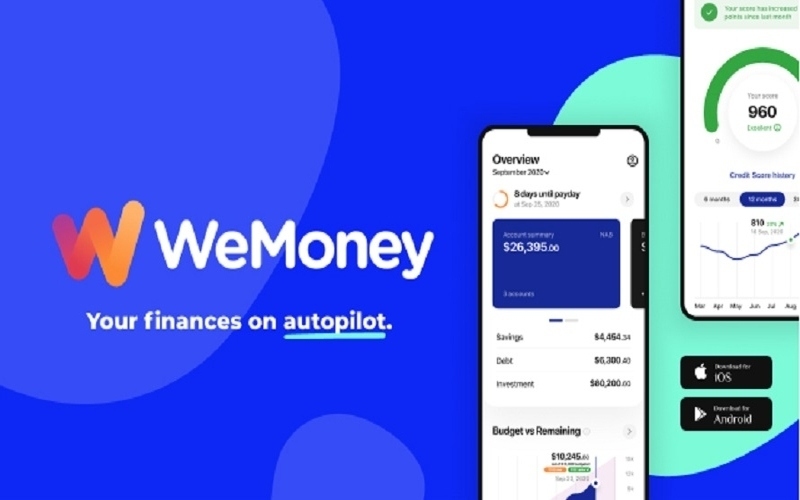Consumer Data Right (CDR) law in Australia
The consumer data right (CDR) law, which passed through Australia’s parliament in August 2019, essentially puts customers more in charge of their consumer data. It has taken a while, but now CDR is finally being put into action, starting with the all-important banking sector. This is giving rise to a new “open banking” environment.
Having data in your hands can do anything from making budgeting easier to saving thousands on your home loan. For example, If you’re a customer with Bank X, you can then share your banking data with Bank Y who may then decide to offer you a better deal than Bank X to encourage you to switch banks. Previously this was mostly secret-squirrel business, and financial institutions did not share customer data between one another.
So, what, in particular, could you do with open banking? We’ve looked to Europe, and the United Kingdom, where there are more than 204 regulated providers, including 134 third party providers, to see what services could come to Australia.
What can I do with open banking in Australia?
Open banking, specifically the ‘read access’ portion of CDR for account and transaction data with major banks, was launched on 1 July 2020. This means if you have a savings account or transaction account with the big four banks (Commbank, Westpac, NAB, ANZ) you can now share your banking data with an accredited third party. As it stands there are only a small number of accredited data recipients, including banks such as 86 400 and Regional Australia Bank, as well as fintech apps such as Frollo and Moneytree, but there will be more soon.
However, currently a third party cannot act on your behalf, which is called the ‘write access’ portion of CDR - allowing ‘write’ access is expected to be launched in the future. We’ve looked to the UK and Europe to see what the future of CDR could hold in Australia.
1. Budgeting made easier
Apps for budgeting already exist in Australia, such as Frollo. Frollo, for example, has a ‘savings challenge’ feature, where users can set themselves goals, such as reducing food delivery consumption, fuel consumption and so on.
“Budgeting has been around for many years but we’re seeing more demand for integrated tools that not only show customers where they are in their spending but, more importantly, what they should do about it,” former Frollo Sales Director Mark Zmarly told Savings.com.au in October 2019.
“That’s really the future of savings and what will likely be a next generation of 'super apps' in banking.”
Frollo can also track spending on buy now pay later platforms, credit cards and other loans.
2. Easier product comparison
Open banking could take product comparison to a whole new level. By having all data laid bare in one interface, the possibility for targeted, relevant product comparison is strong.
For example, it’s no use looking at a competitive home loan product for borrowers with a 30% deposit if you’ve only got a 20% deposit. With open banking, a third party app might be able to automatically show you more suitable products as your savings amount grows, or provide goals and insight on how you could save more money, without having to wade through endless website information.
3. Providing a one-stop financial overview
Australian app Frollo piles all of a customer’s bank accounts, investment portfolios, overseas currencies and loyalty points all in one user-friendly interface. There is also wealth tracking, including superannuation growth.
Traditionally, there has been a bit of hesitation in this space, with customers wary of giving third party apps access to information. However, customers may be more likely to trust apps that have received CDR data recipient accreditation from the Australian Competition and Consumer Commission (ACCC).
4. Easier applications for loans and other products
One of the main hurdles for both borrowers and lenders is gathering all the right information and identification, compiling it and being able to deliver a competitive product in a timely fashion. With open banking and a customer’s information laid bare, a lot of the hard work is already done.
One such company to do this in the UK is TrueLayer. TrueLayer is offered to financial institutions to easily identify customers' identity and account ownership. It also enables institutions to access transaction history, query bank accounts and account balances. TrueLayer also integrates other fintech services from brands with trendy names such as Revolut, Zopa, Crunch, Plum, and Chip.
5. Saving money on loan products
By allowing more flow of customer financial data between companies, lenders will have a better insight into a customer’s financial health and profile. The end result of this could be a more personalised and more competitive loan product, whether that’s a car loan, home loan or personal loan.
While not offered direct to consumer, one such open banking brand to do this in the UK is Yapily. Yapily’s customers include Intuit Quickbooks, and has a service that provides lenders with enriched data to give better insight into a customer’s risk profile. The brand says it is coming to Australia soon.
Savings.com.au’s two cents
Open banking is here, and it’s exciting. If we look to our friends over in the UK, open banking could proliferate the use of fintechs Australia-wide. Up until now many of these fintechs have been hamstrung by lack of data insight and a stonewall from traditional financial institutions. Now, you could be seeing a lot more of them - trendy names and all.
For those concerned about privacy, open banking is an opt-in service. By opting in, though, you could gain access to easier product comparison, more suitable financial products, and better deals. The possibilities are nearly endless, so watch this space.



 William Jolly
William Jolly
 Alex Brewster
Alex Brewster